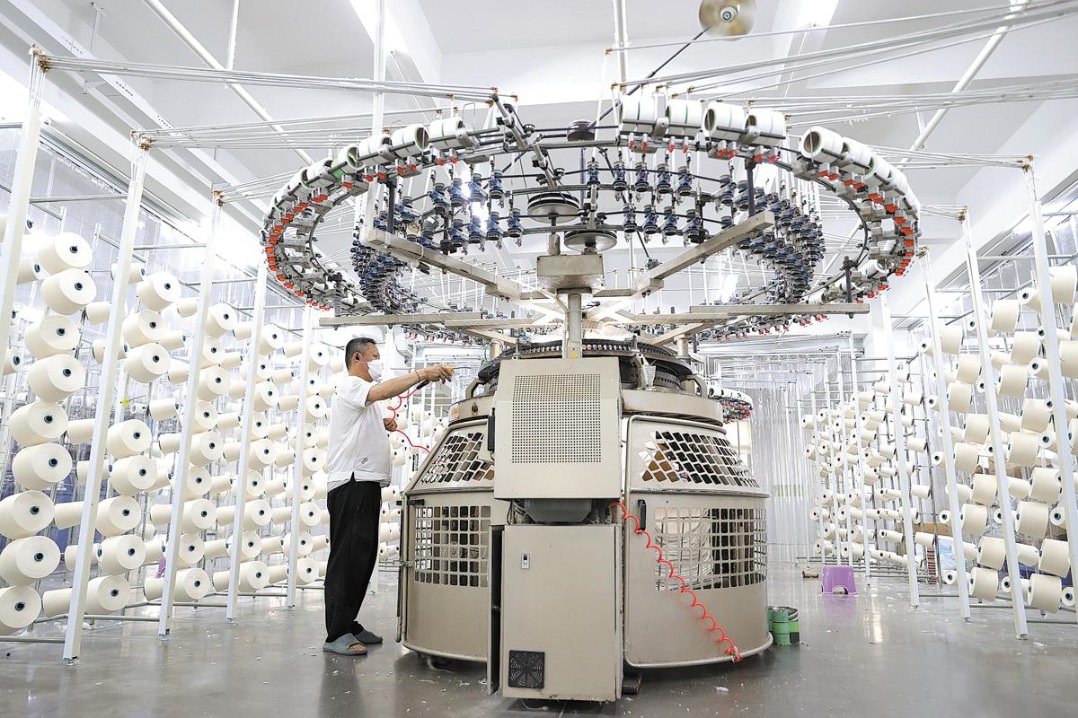Asia to remain 'champion of growth'

But region must address challenges that could hurt future momentum, IMF report says
The economic outlook for the Asia-Pacific region remains the strongest in the world, but the region must pay attention to uncertainties and hurdles that may jeopardize growth in the future, says an International Monetary Fund report.
The IMF 2017 Asia and Pacific Regional Economic Outlook, which was released in Beijing recently, says the Asia-Pacific region continues to be the world leader in growth, and recent data point to a pickup in momentum.
Growth of the Asia-Pacific region is projected to reach 5.5 percent this year and 5.4 percent in 2018, while in 2016 it was 5.3 percent, thanks to continued policy support in China and Japan, which in turn benefits other economies in the region, the report says. Growth is revised downward in India due to temporary effects from its currency exchange initiative and in South Korea because of political uncertainty.
"Asia has been the world's champion of growth. It has been achieved in the last decade and is expected to continue at least for the next decade," says Ranil Salgado, chief of the regional studies division of the IMF's Asia and Pacific department.
"China has contributed to almost one-third of global growth for a few decades, and Asia as a whole contributed to two-thirds of global growth, and that is why more and more people globally pay attention to what is happening in this region as well as China," he says.
But the region's medium-term growth faces headwinds, including from aging populations and sluggish productivity, so the region also needs structural reforms to address its demographic challenges and to boost productivity, the report says.
The slowdown of productivity growth is notable in China and other advanced economies in the region, resulting from anemic investment, little impetus from trade, slowing human capital formation and reallocation of resources to less productive sectors, it says.
That's why structural reforms are necessary for the region to sustain growth, Salgado says. In China, the government has been taking measures to cool the real estate sector and rein in financial stability risks, he adds.
Minsuk Kim, an economist in the IMF's Asia and Pacific department, says that demographic trends could subtract 0.5 to 1 percentage point from annual GDP growth over the next three decades in countries including China and Japan. Overall, demographics are likely to be slightly negative for Asian growth and could subtract 0.1 of a percentage point from annual global growth over the next three decades.
He says Asia should deal as soon as possible with the challenges that aging populations might bring to the region's economic growth. To deal with demographic changes, it is urgent to make policies that are aimed at caring for the elderly, raising labor force participation and boosting potential growth.
Wei Benhua, academic member of the International Monetary Institute of Renmin University of China and former executive director for China at the IMF, notes that in the past, China's growth relied on exports and investment, but now the growth model is changing and consumption will become the main driver of economic growth.
"I think China has done very well so far," he says. "Even though China's growth has slowed, it still performs better than many economies in the world."
Hua Changchun, global chief economist of the Guotai Junan Research Institute, says urbanization will also be an important driver of China's economy for a long time.
"We see people are rapidly moving from villages into cities, which means there will be huge demands for consumption and investment in China in the next few years," he says.
Moreover, China will accelerate reform, including that of State-owned enterprises, which, along with building associated with the Belt and Road Initiative, will also help boost economic growth in the long term.
chenyingqun@chinadaily.com.cn
(China Daily European Weekly 05/26/2017 page29)































